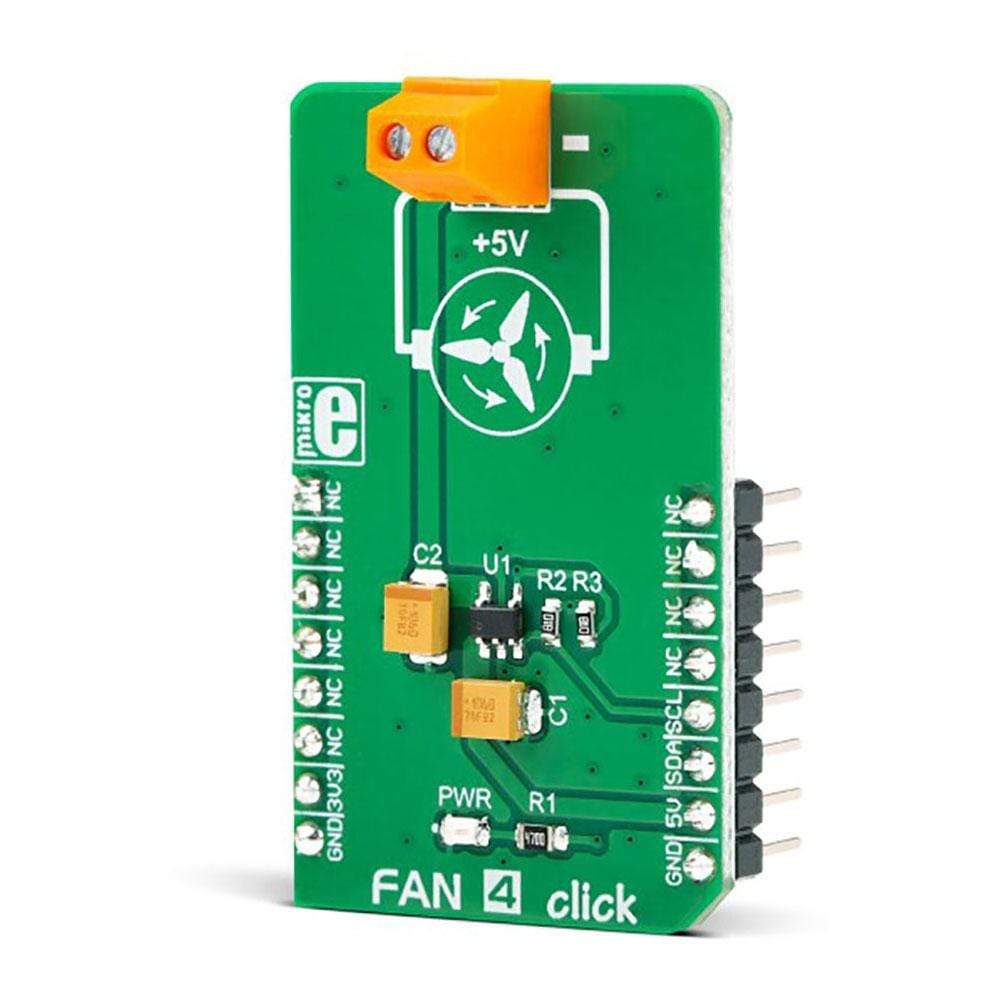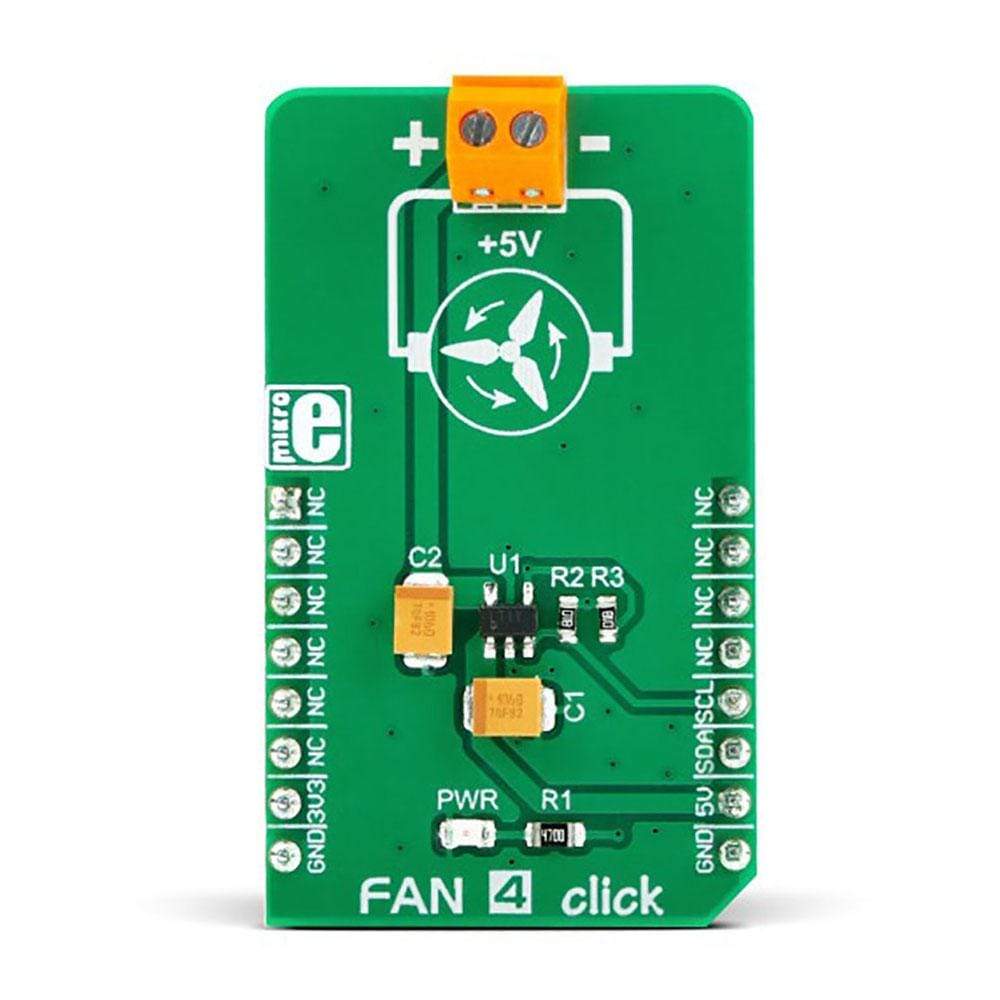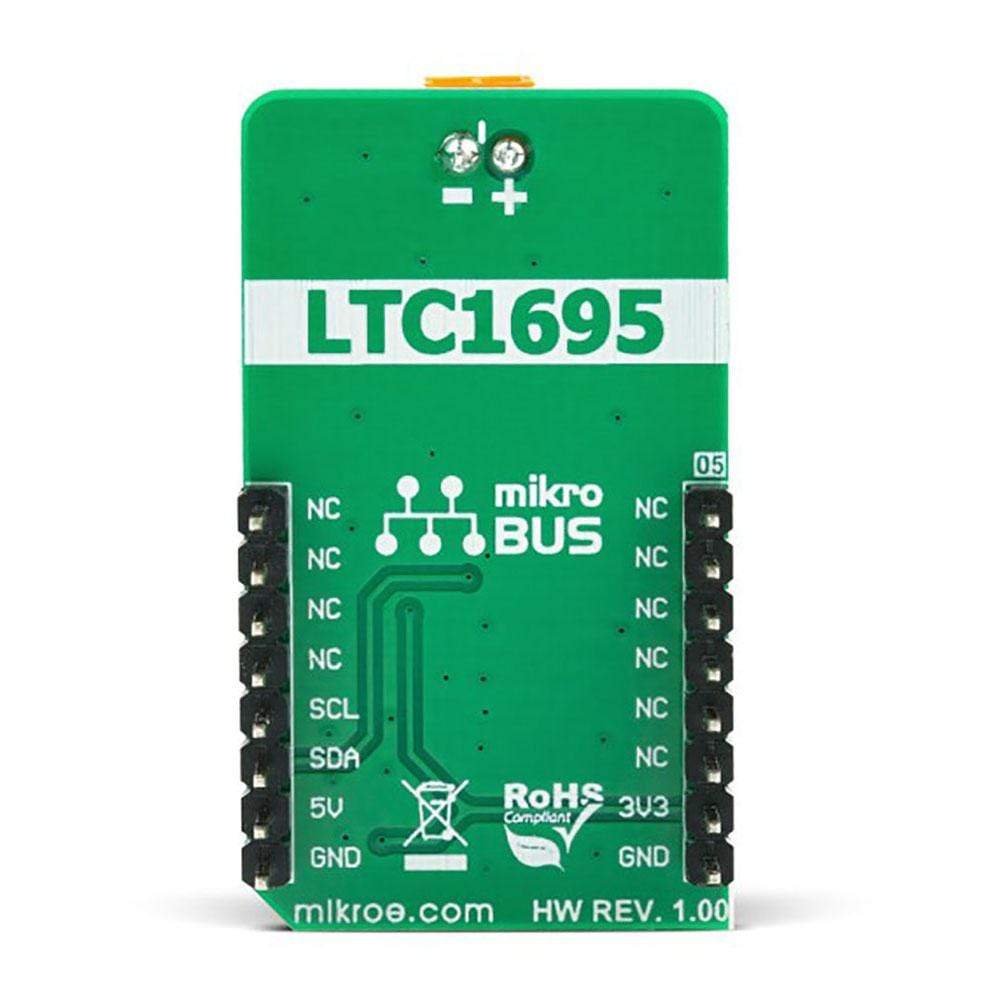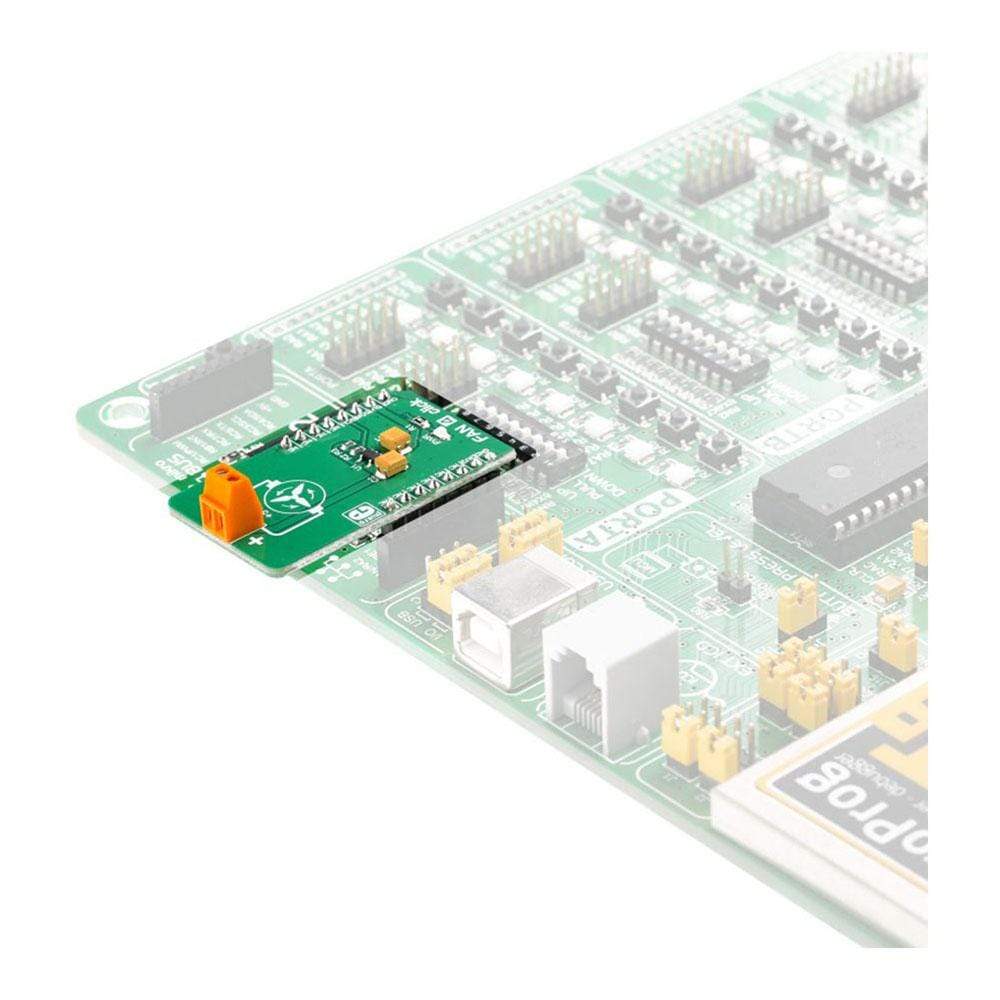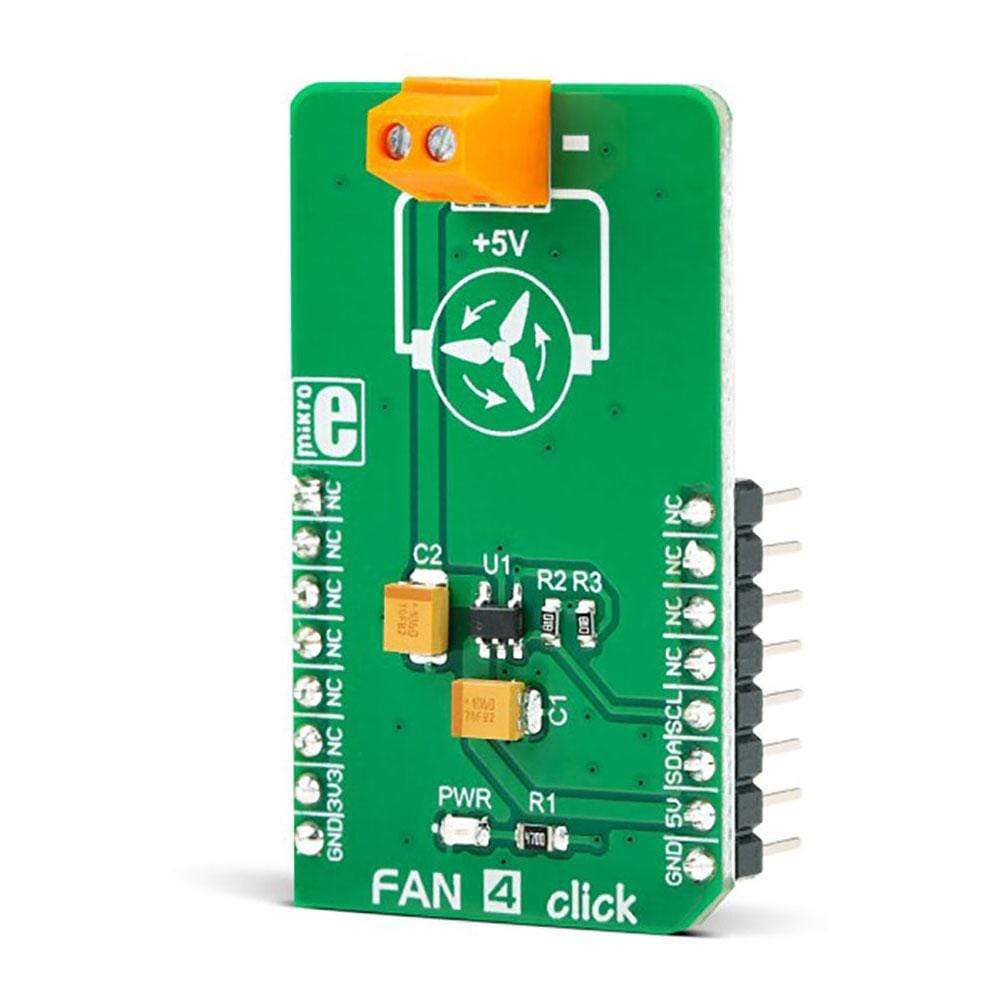
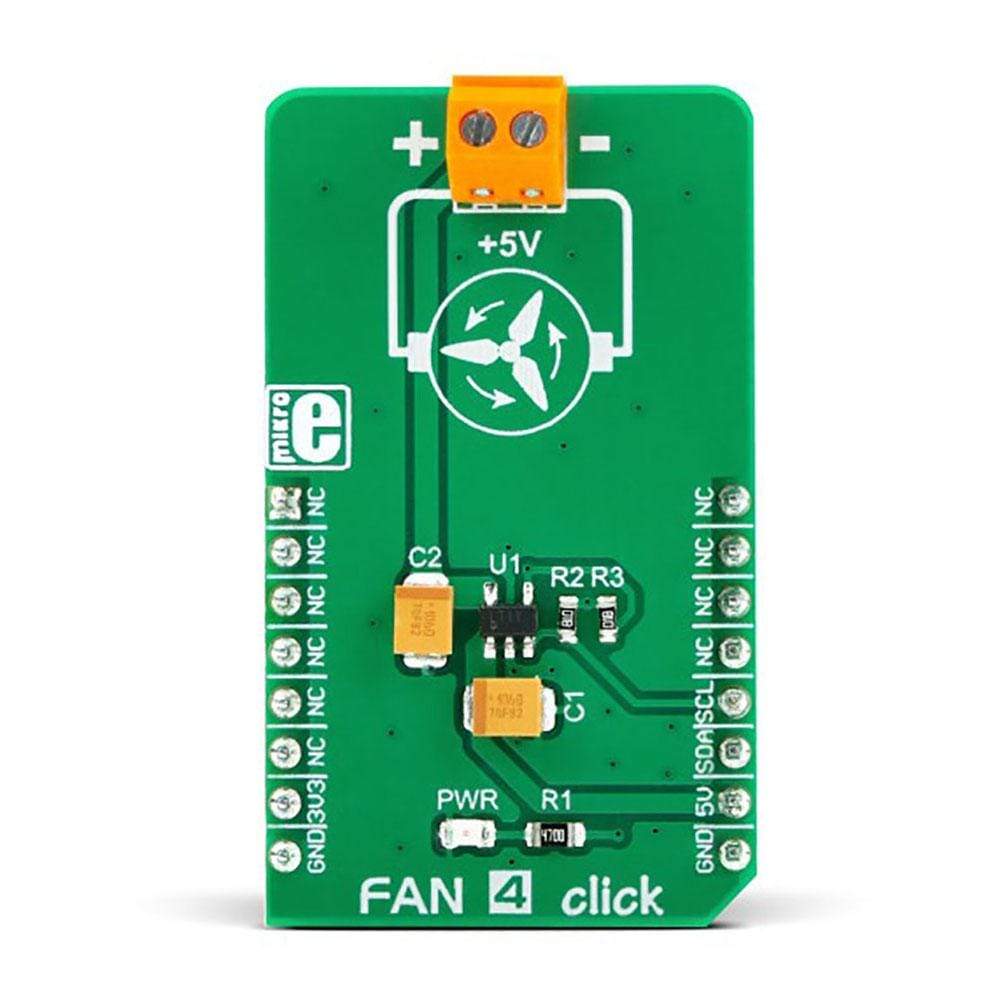
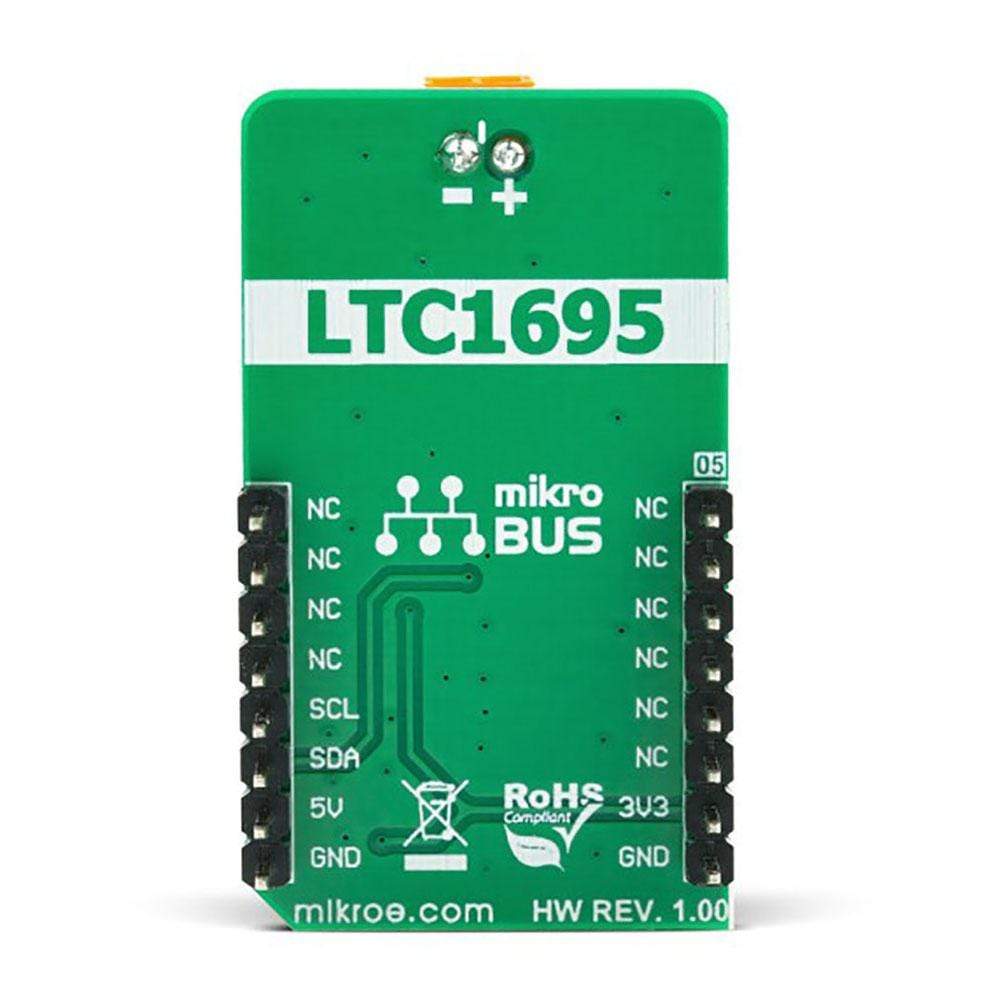
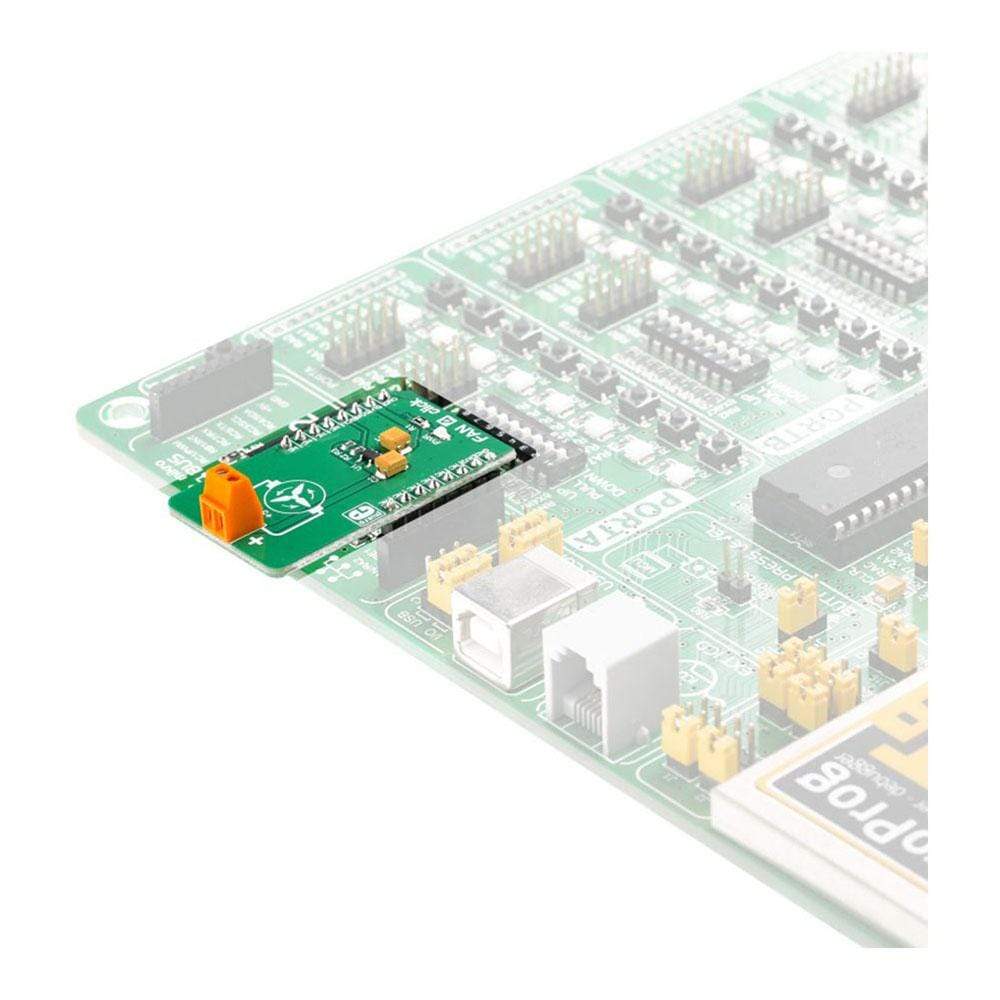
Overview
The Fan 4 Click Board™ is a very compact, two-wire fan driver. It utilizes an integrated 5V, DC, brushless-motor driver chip. Its output voltage regulation and current limiting capabilities allow the speed control for the two-wire DC brushless motors. The Click Board™ uses the LTC1695 IC, which features an integrated 6-bit DAC. The DAC regulates the output voltage in the range from 0 to 4.92V. This IC also has some additional features, such as the maximum output current limiting, and thermal shutdown protection. There is also a startup boost timer which ensures reliable startup of the fan, connected to the output terminal.
Downloads
Le Fan 4 Click Board™ est un pilote de ventilateur à deux fils très compact. Il utilise une puce de pilote de moteur sans balais 5 V CC intégrée. Ses capacités de régulation de tension de sortie et de limitation de courant permettent de contrôler la vitesse des moteurs sans balais CC à deux fils. Le Click Board™ utilise le circuit intégré LTC1695, qui dispose d'un DAC 6 bits intégré. Le DAC régule la tension de sortie dans la plage de 0 à 4,92 V. Ce circuit intégré possède également des fonctionnalités supplémentaires, telles que la limitation du courant de sortie maximal et la protection contre les arrêts thermiques. Il existe également une minuterie de démarrage qui assure un démarrage fiable du ventilateur, connectée à la borne de sortie.
| General Information | |
|---|---|
Part Number (SKU) |
MIKROE-3200
|
Manufacturer |
|
| Physical and Mechanical | |
Weight |
0.019 kg
|
| Other | |
Country of Origin |
|
HS Code Customs Tariff code
|
|
EAN |
8606018713660
|
Warranty |
|
Frequently Asked Questions
Have a Question?
Be the first to ask a question about this.

